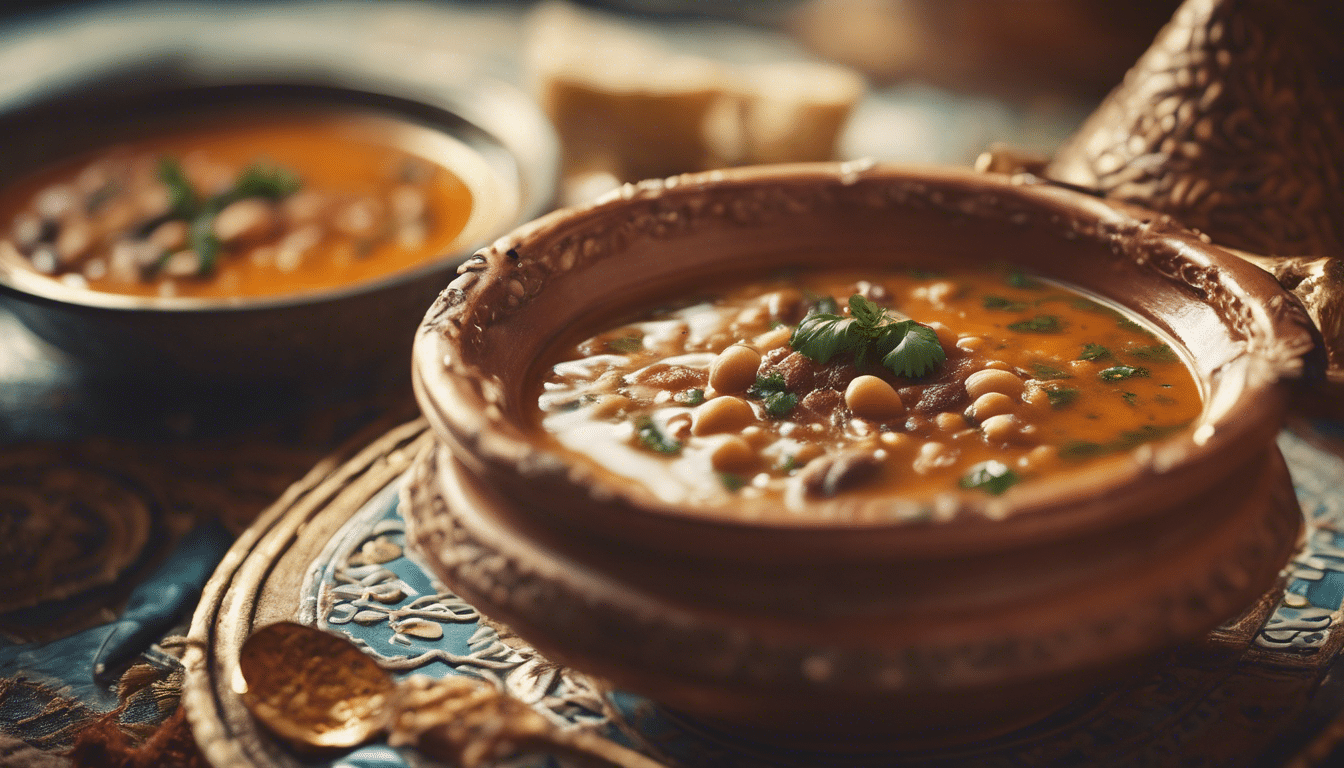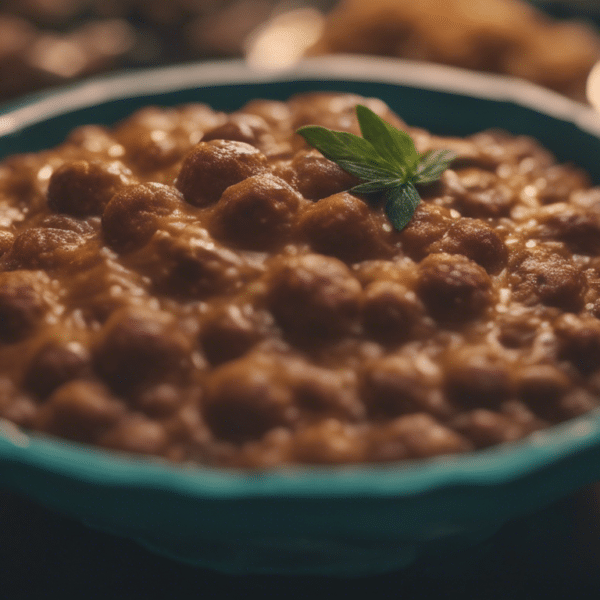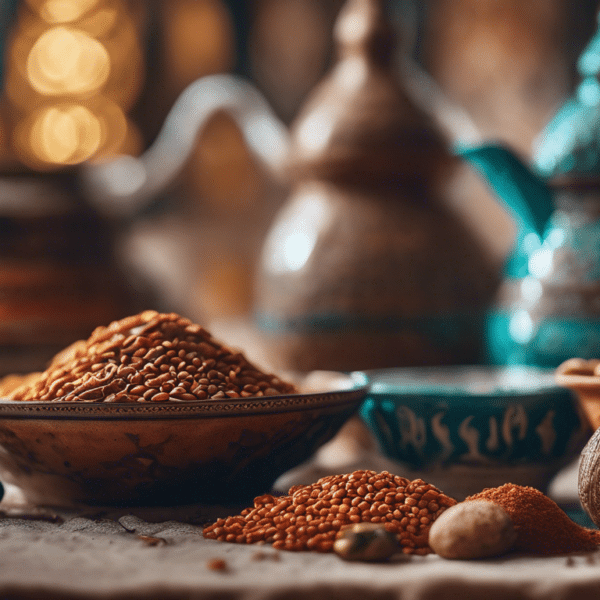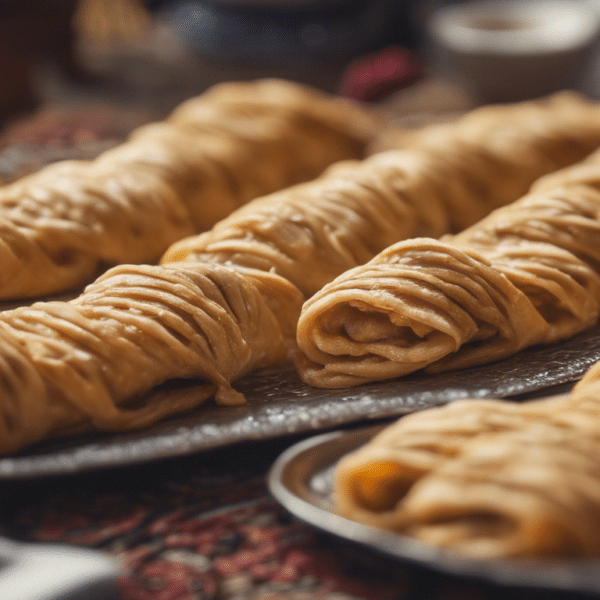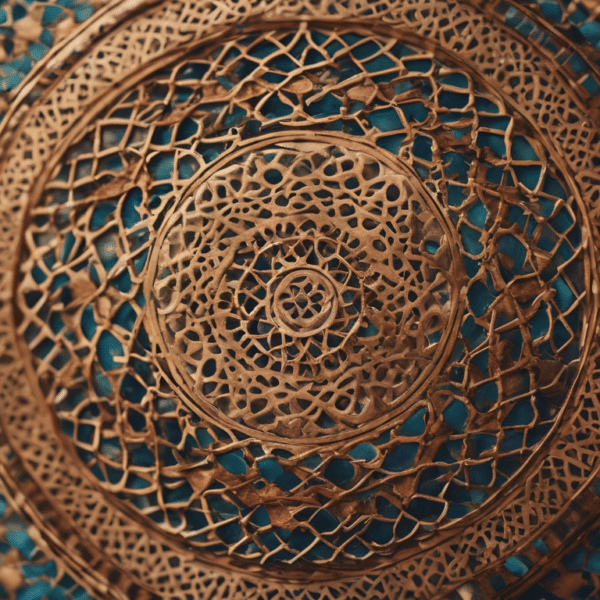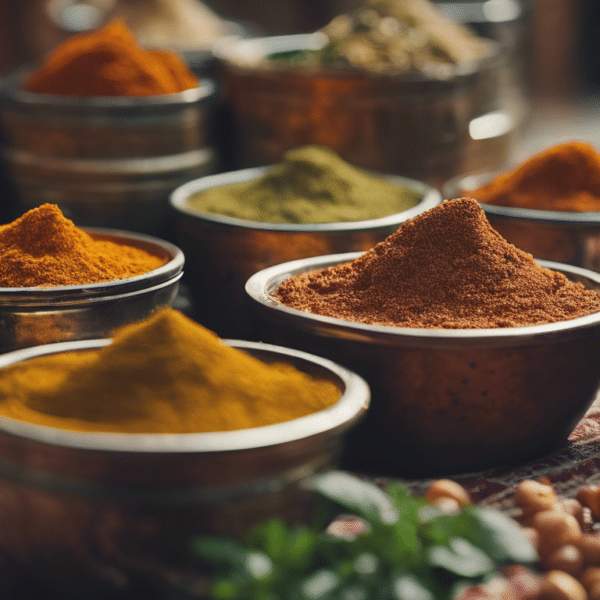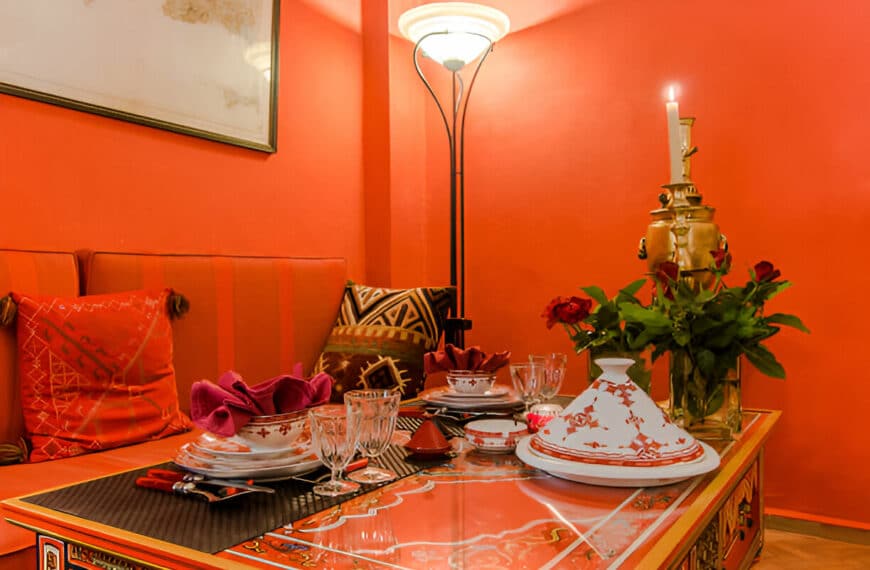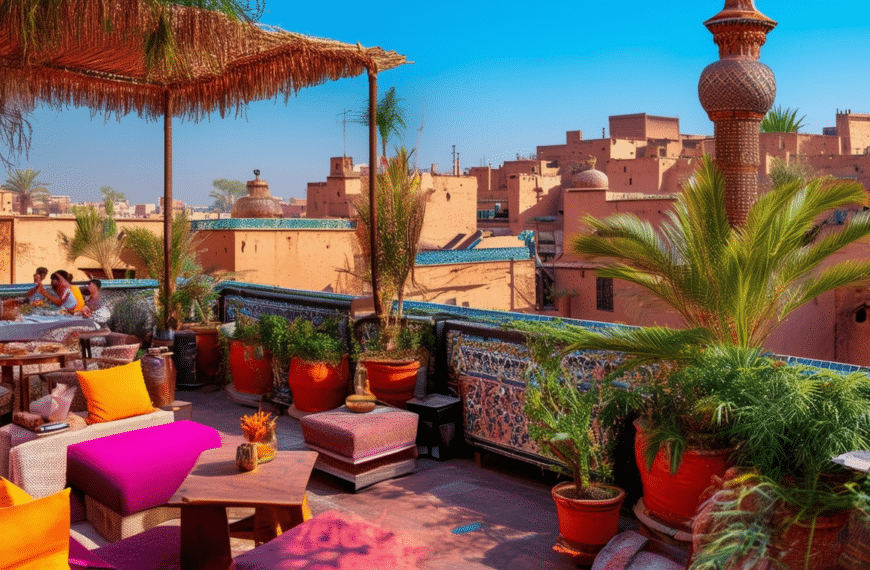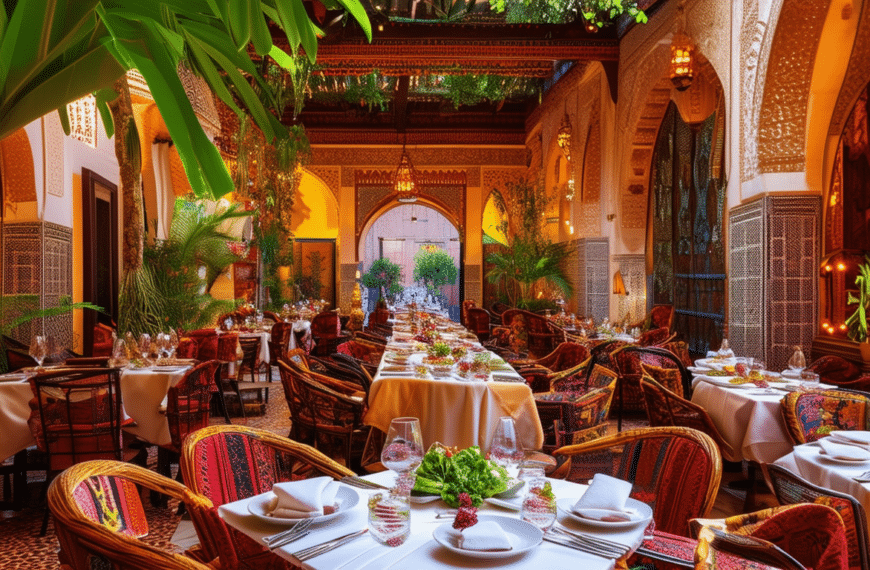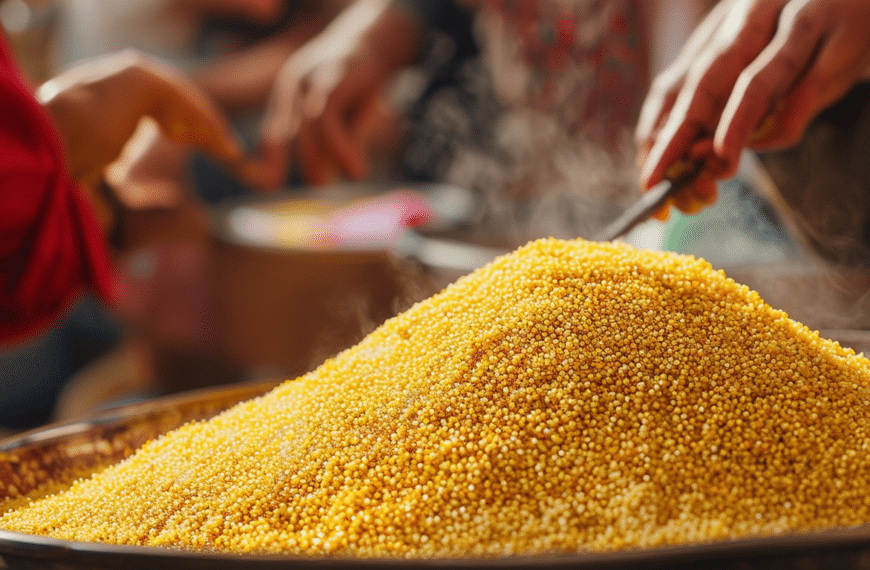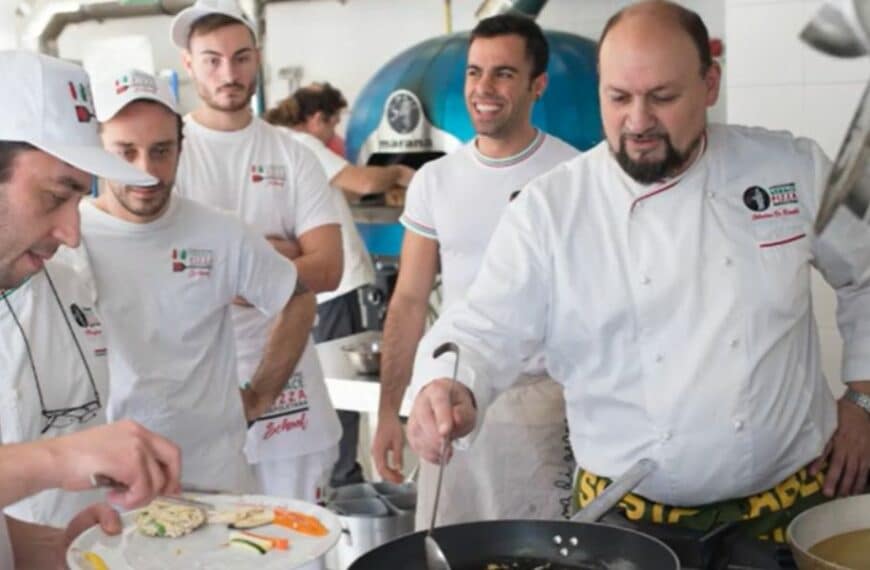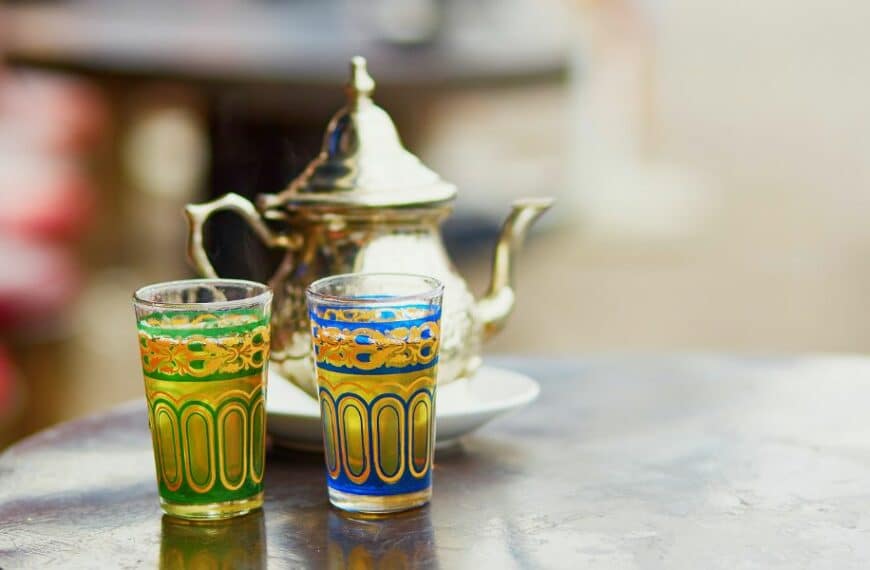Embark on a culinary journey to the heart of Moroccan tradition with the soul-warming Harira soup. A mosaic of savory spices, tender meat, and hearty legumes, this treasured bowl is more than just a meal; it’s a storied delicacy, steeped in culture and comfort. Uncover the celestial secrets behind this beloved dish and embrace the harmony it brings to any kitchen. The magic of Harira awaits your spoon!
The essence of Moroccan harira soup
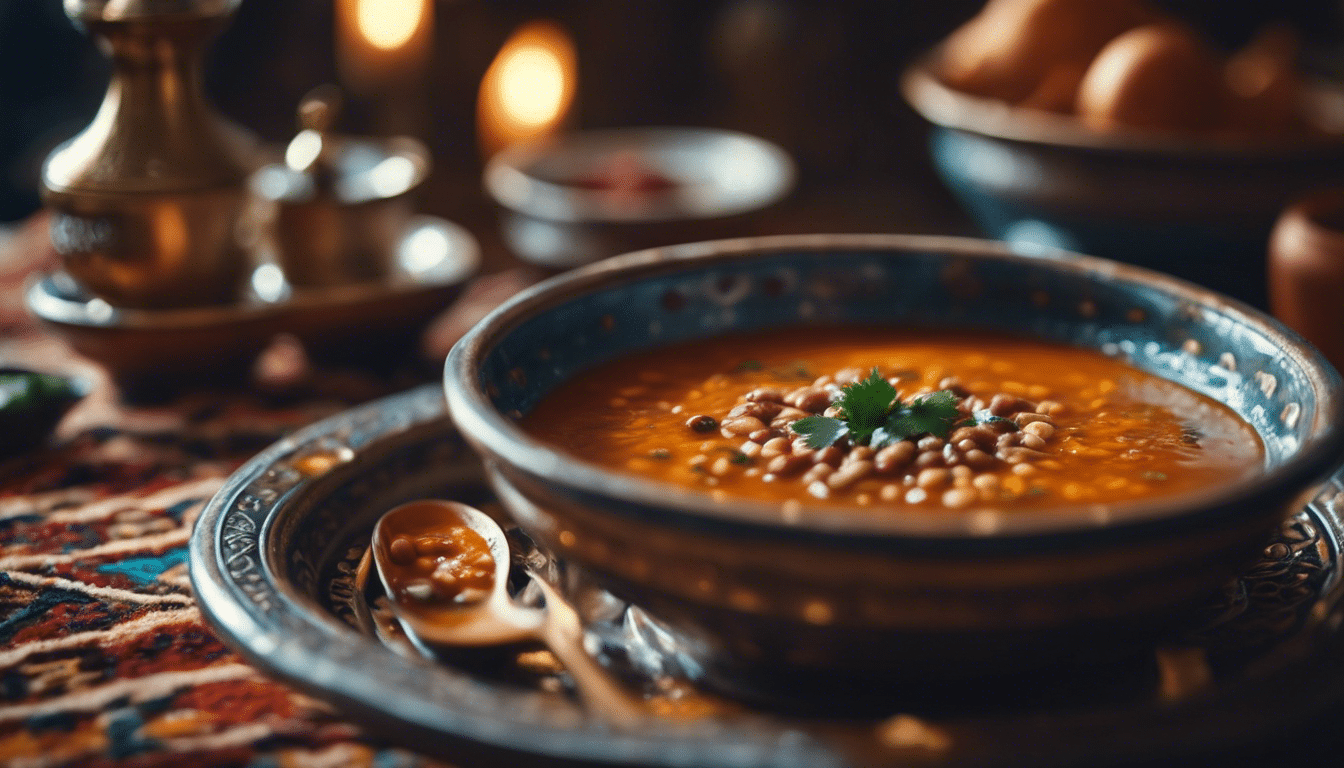
Plunge into the heart of Moroccan culinary tradition, and you’ll find the soul-warming hug of harira, a soup that carries with it the whispers of the medina and the heartbeat of the bazaar. This isn’t just a dish; it’s a narrative of culture simmering in a pot.
Harira: More Than Just a Soup, it’s an Emblem of Moroccan Hospitality. Step into any Moroccan home, and the chances are that a steaming pot of harira has a place of honor on the stove, with its rich tomato base acting as a canvas for a colorful palette of ingredients. From tender lentils and chickpeas offering substance, to the fragrant coriander and parsley breathing life into the concoction, every spoonful promises a microcosm of Moroccan zest.
Here, the pivotal role of spices takes center stage, with the warm embrace of cinnamon, the punch of pepper, and the kiss of ginger mingling in harmony. A traditional harira is not just about the balance of flavors; it’s about invoking the very essence of generosity and abundance that defines Moroccan community life.
Customizing Your Harira can embody various personas, depending on whether it’s infused with succulent pieces of lamb, beef, or kept vegetarian, warm and inviting for all to enjoy.
But the true testament to its versatility comes in its performance during Ramadan. As the evening adhan resonates, harira becomes the herald of iftar, breaking the day’s fast and replenishing energy. A spoonful of this savory soup represents comfort, a gentle easing into the night’s feast, and a communal moment where hearts and bellies are filled together.
Diving into the Anatomy of Harira, its foundation starts with the perfect stock – meat-based or vegetable, leading to a crescendo of tomatoes, legumes, and herbs that waltz in gradual layers of taste and texture. This process isn’t rushed; it’s a melody that requires patience as it slowly builds up to a crescendo of flavors that tell a story of lands, spice caravans, and family traditions passed down through generations.
As we Talk Textures in Harira, there’s a delightful contrast to be experienced. The soup is thickened not just with flour but with the magic of tomatoes and the natural creaminess of chickpeas and lentils. At times, rice or fine vermicelli might join the dance, adding their unique swirls to this rich medley.
The final touch, served with a drizzle of lemon juice or a sprinkle of dates on the side, harkens back to ancient wisdom, providing the perfect juxtaposition of sour and sweet – echoing the intricate balance of life itself.
So, whether you’re a seasoned traveler like Sarah, seeking to recreate the multisensory symphony of a Moroccan feast in your kitchen or a newcomer to the rich tapestry of these flavors, embrace the versatility and warmth of Moroccan harira soup. It’s not merely a dish but a journey through Moroccan culture, where every ingredient is a testament to the country’s vibrant history and its people’s generous spirit. Enjoy harira as the sunsets or as a hearty welcome to your table – but always savor it as a loving embrace from Morocco herself.
Unpacking the rich flavors and spices
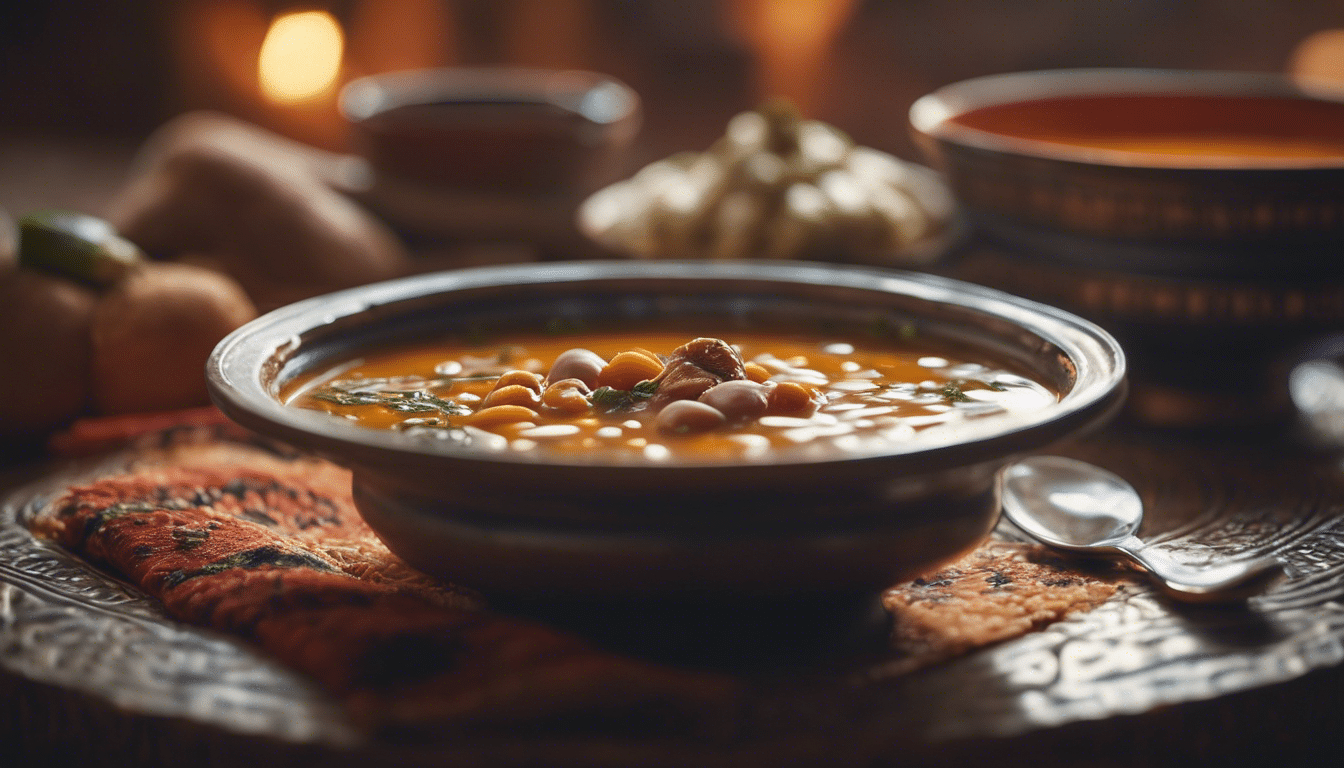
Take a journey through the bustling souks of Morocco without ever leaving your kitchen. The secret lies in a simmering pot of harira, a quintessentially Moroccan delight. Often gracing the table during Ramadan, this soup tells tales of cultural tradition and authentic culinary artistry. Open your senses, as we explore the aromatic labyrinth of spices and textures that define Moroccan harira soup.
A symphony of spices & herbs
Imagine the blending of sounds in a symphony; now translate that into flavors, and you have the base of harira. You start with a powerful crescendo of cinnamon and ginger, evoking warmth. Next, the vibrato of turmeric and saffron sweeps in, offering earthy undertones and a golden hue. No harira is complete without the passion of fresh herbs – cilantro and parsley dance through the melody, adding refreshing highs to the rich score.
– Cinnamon: The warming embrace
– Ginger: A spicy whisper
– Turmeric: The earth’s paintbrush
– Saffron: Exotic strands of flavor
– Cilantro & Parsley: Freshness in harmony
As these flavors meld, they create a base that is profoundly complex and infinitely inviting.
Proteins and textures: the heartbeat of harira
Within this fragrant potion, the texture is added with purpose. Think of tomatoes, chopped and pureed, forming the backbone, as they offer both a tangy vibrancy and a smooth consistency. Lentils and chickpeas come forth as the rhythm section – essential, present, providing protein and a satisfying bite that complements the soup’s velvety base. Occasionally, rice or fine noodles are invited to the ensemble, adding a delicate texture that absorbs the soup’s essence.
– Tomatoes: Vibrant and tangy
– Lentils & Chickpeas: Nutritious foundation
– Rice or Fine Noodles: Delicate carriers of flavor
Each spoonful of harira is a journey through a landscape of sensation, a voyage of discovery with every taste.
Culinary alchemy: bringing the soup to life
Preparing harira is like a dance, an act of alchemy where each ingredient is introduced at a precise moment. The beauty of harira lies in its simmering process. As the pot sits on the flame, a transformation happens – the raw ingredients evolve into a dish that’s much more than the sum of its parts. This slow cooking process allows for the deep integration of flavors, ensuring that each sip is a revelation.
To truly appreciate the complexity of harira, one must approach its creation with patience and respect for the ritual that it is. From the sautéing of onions to the gentle addition of broth, every step is a brushstroke on a canvas of culinary craftsmanship.
Finishing touches: layering the flavor complexity
As with any masterpiece, the final touches to harira can elevate it from excellent to sublime. A squeeze of lemon juice adds a dimension of brightness, lifting the heavy flavors just enough to enchant the palate. For those who favor heat, a pinch of red pepper flakes or a dash of harissa can introduce an element of fire, a bold statement against the soup’s rich comfort.
Eating harira is a dialogue between the dish and your senses. Each ingredient contributes to the larger narrative – a tale of flavor where each character has a vital role to play, and where the ending is as satisfying as it is nourishing.
Embracing the Moroccan heritage through harira
Ultimately, harira is more than a soup. It is an invitation to embrace Moroccan culture, to partake in a communal experience that transcends mere sustenance. It carries the stories of generations, the knowledge of spice merchants, and the love of Moroccan cooks who have passed down this recipe through time.
In a world where fast food and quick meals have become the norm, taking the time to craft a bowl of harira is a statement. It’s a stand for tradition, for the love of cooking, and for the importance of celebrating the rich tapestry of flavors and spices that Morocco has to offer.
So, as you embark on creating your own harira, remember that each spoonful is a connection to history, an exploration of culture, and a commitment to the art of flavor. Bon appétit, or as Moroccans would say, Bsaha!
The versatility of harira across occasions
Venture into the world of Moroccan cuisine, and you’ll find the rich tapestry of flavors and aromas pleasantly overwhelming. Among these, the humble Harira stands out, not just as a soup but as a cultural phenomenon that dances across various occasions. It’s a hearty concoction thriving with lentils, tomatoes, chickpeas, and a symphony of spices that can enthrall your taste buds.
The Cultural Emblem of Ramadan
If you explore the cobblestoned alleyways of Moroccan festivities, you will undeniably encounter Harira as the star of Ramadan nights. It’s a culinary ritual, the zesty delight that breaks the fast and offers comfort to the soul. The delicious broth awakens the senses and is often paired with sweet dates or chebakia, embracing the tradition of sweet and savory.
A Culinary Chameleon: Harira for Every Mood
But do not be fooled; the versatility of Harira stretches far beyond the breaking of a fast. It’s the perfect companion to a winter evening, a warming embrace in the chilly weather. As the seasons change, so does the character of Harira—lighter versions can adapt to the caress of a summer breeze, too.
– Cold winter night? Harira brings warmth.
– Scorching summer day? A lighter, zestier Harira refreshes.
– Seeking comfort? This soup heals.
Honoring Guests with Traditional Flavors
Dive into the tradition of Moroccan hospitality, and you will encounter Harira handed to you on a silver platter—the embodiment of a warm welcome. It’s a dish that honors the guest and showcases the depth of Moroccan culinary artistry. No matter the occasion, whether an intimate family gathering or a grand affair, Harira is always a fitting gesture of generosity.
The Soup That Binds Generations
Within Moroccan families, Harira is the thread that weaves generations together. From grandmothers to young gourmets, the recipes are passed down, often with personal twists and secrets that add to its enigma. It’s not just a recipe; it’s a narrative of family, love, and the preservation of heritage.
Harira Goes Global: Embracing Modernity
In the modern gastronomic arena, Harira has stepped out of its Moroccan confines, inviting chefs and home cooks around the globe to infuse it with their creativity. Like a canvas, it has welcomed new ingredients and techniques, marrying the old with the new and proving that it can be a global staple that respects its roots while embracing innovation.
With each spoonful of Moroccan Harira Soup, one can taste the spice-laden history of Morocco, the robust fusion of ingredients and the versatility that makes it suitable for any table, at any occasion. It’s more than just soup; it’s the essence of Morocco, simmered to perfection and served with love.

